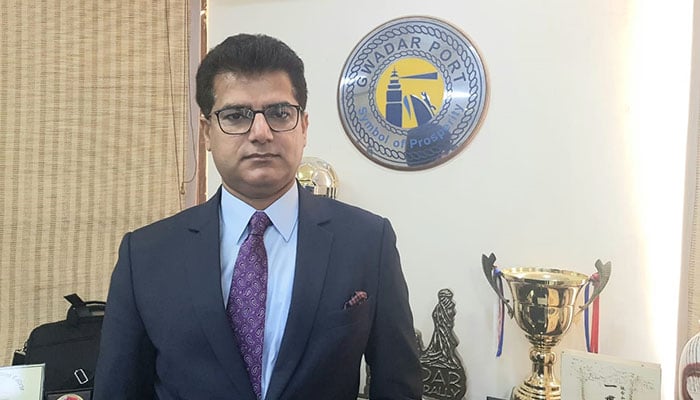Gwadar Port will take 20-25 years to develop: Gwadar Port Authority chairman
The chairman of the Gwadar Port Authority talks to Geo.tv about Gwadar's potential and the time it will take have the port up and running
April 24, 2019

Geo.tv speaks to Naseer Khan Kashani, the chairman of the Gwadar Port Authority (GPA).
Excerpts:
What are some of the larger projects the Gwadar Port Authority (GPA) is undertaking?
Kashani: In order to make the Gwadar seaport functional, there are a number of projects being worked on, at the moment. A key project is the Gwadar International Airport. Then, there is the East-Bay Expressway, a Free Zone to spur economic growth, dredging of berthing areas and channels, coal-based power plants, a Pak-China technical and vocational institute, projects for portable water, a China-Pakistan Friendship Hospital, a project called ‘Clean and Green Gwadar’ for the local environment and the Gwadar Smart port city master plan. All these projects are at different stages of completion.
Now, the development of ports is a technical and strenuous job. It demands patience and time. Since the Gwadar port will be a world-class facility it requires high-tech coastal engineering, state-of-the-art dredging and modern craftsmanship. According to our master plan, it will take almost 20 to 25 years to develop the port.
What will be Gwadar’s role in China’s One Belt, One Road project?
Kashani: The Gwadar port is an integral part of the China-Pakistan Economic Corridor (CPEC) as well as the Belt and Road Initiative (BRI). Since the port is located near the route used to trade in oil, the port enjoys geostrategic and geo-economic importance for all BRI’s beneficiary countries. It will offer a trade outlet for the land-locked Central Asian countries, western China and Afghanistan. Gwadar, for the Chinese, is the cheapest link to Central Asian states. Right now, China’s exports and imports have to travel around 10,000 kilometres from the Persian Gulf to China’s eastern region. Gwadar provides a short and cheaper route to ship oil and gas from the Middle East and minerals from Africa.
In that case, is Iran’s Chabahar port a serious threat to Gwadar?
Kashani: Chabahar does not pose any challenge. As I said, Gwadar’s geostrategic position, coupled with China’s expertise and investment, our port can easily outdo the Iranian one. Also, let’s not forget that the Chabahar port is the first time that India is developing a foreign port. But India lacks experience in developing a deep-sea port. Another drawback is the distance. India’s major ports such as in Mumbai, Kolkata and Goa are in the Indian Ocean Region and Chabahar lies in the Gulf of Oman.
For now, Pakistan has handed over the Gwadar port to China to ensure uninterrupted momentum for progress. Iran had not awarded the same privilege to India. Also, Iran has been suffering under international sanctions, which will put added pressure on India if it chooses to pursue the port.
Besides, one of the crucial points that allows Gwadar to outwit Chabahar is its connectivity to the CPEC and the larger One Belt, One Road project.
When will Gwadar be open for tourists?
Kashani: Gwadar is widely appreciated as a land of warm waters, unexplored beaches, and mesmerizing mountains. But it should be kept in mind that everything is demand driven. There are some basic requirements that need to be fulfilled first before tourism can flourish in the area. Hopefully, once the port is built, other Pakistani industries, like the real estate, will slowly move in. And then commercial activities will follow. After such a momentum builds, Gwadar will be ready for tourists.
Khan is a journalist.











